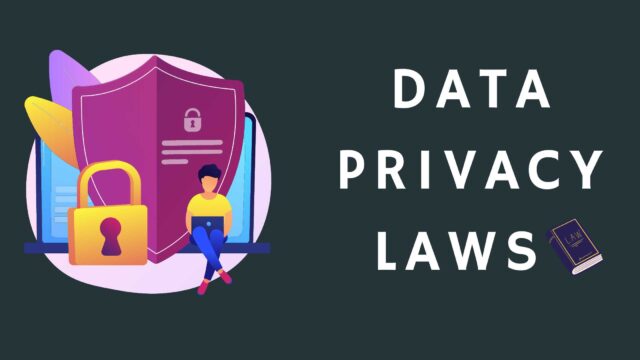Ensuring compliance with data privacy laws is critical in web and app development, especially as users become increasingly aware of their data rights. Various regulations, such as the General Data Protection Regulation (GDPR) in Europe, the California Consumer Privacy Act (CCPA) in the U.S., and others worldwide, mandate specific practices regarding user data collection, storage, and usage. Here’s a guide on how to ensure compliance with these laws throughout the development process:

Table of Contents
Toggle1. Understand Applicable Laws
- Identify Jurisdictions: Determine which data privacy laws apply to your project based on your target audience’s location and the nature of the data you collect.
- Research Requirements: Familiarize yourself with the key provisions of relevant regulations, including user consent, data access rights, data breach notifications, and data processing obligations.
2. Implement Data Minimization
- Collect Only Necessary Data: Limit data collection to only what is necessary for your app or website’s functionality. Avoid collecting excessive or irrelevant information.
- Avoid Defaults: Ensure that users must actively choose to provide data rather than assuming consent through default settings.
3. Obtain Explicit Consent
- Clear Consent Mechanism: Implement clear and user-friendly consent mechanisms, such as checkboxes or consent forms, explaining what data is collected and for what purposes.
- Granular Consent Options: Allow users to provide consent for specific types of data processing activities (e.g., marketing communications, analytics).
4. Implement Privacy Policies
- Create a Transparent Privacy Policy: Develop a comprehensive privacy policy that outlines how you collect, use, store, and share user data. Ensure it is accessible and written in clear, straightforward language.
- Regular Updates: Keep the privacy policy up to date, reflecting any changes in data practices or applicable laws.
5. Design for Privacy
- Privacy by Design: Incorporate privacy considerations into the design and architecture of your app or website from the outset. This includes minimizing data storage and ensuring secure data handling practices.
- User Controls: Provide users with options to manage their data, such as allowing them to delete their accounts or download their data.
6. Ensure Data Security
- Implement Strong Security Measures: Use encryption for data storage and transmission, secure your servers, and adopt best practices for cybersecurity to protect user data from breaches.
- Access Controls: Limit access to user data to only those who need it for legitimate purposes. Use role-based access controls to enforce this.
7. Train Your Team
- Data Privacy Training: Provide training for your development team and employees on data privacy laws, compliance requirements, and best practices for handling user data.
- Promote a Privacy Culture: Foster a culture of privacy within your organization, emphasizing the importance of data protection and compliance.
8. Conduct Regular Audits
- Compliance Audits: Perform regular audits to assess compliance with data privacy laws and internal policies. Identify any gaps or areas for improvement.
- User Feedback: Encourage users to provide feedback regarding privacy concerns and their experiences with your data practices.
9. Implement Data Breach Response Plans
- Establish a Response Plan: Develop and document a data breach response plan that outlines steps to take in the event of a data breach, including notification procedures.
- Timely Notifications: Be prepared to notify affected users and relevant authorities within the required timeframes if a breach occurs, as mandated by applicable laws.
10. Work with Legal Experts
- Consult Legal Professionals: Engage with legal experts specializing in data privacy to ensure that your practices align with applicable laws and regulations. They can provide guidance on compliance strategies and help navigate complex legal landscapes.
- Stay Updated: Data privacy laws are continuously evolving. Keep abreast of changes and new regulations that may impact your project.
Conclusion
Ensuring compliance with data privacy laws in web and app development requires a proactive approach. By understanding relevant regulations, implementing robust data protection practices, and fostering a culture of privacy within your organization, you can protect user data while building trust and credibility with your audience. Taking these steps not only mitigates legal risks but also enhances user satisfaction and loyalty.


No responses yet